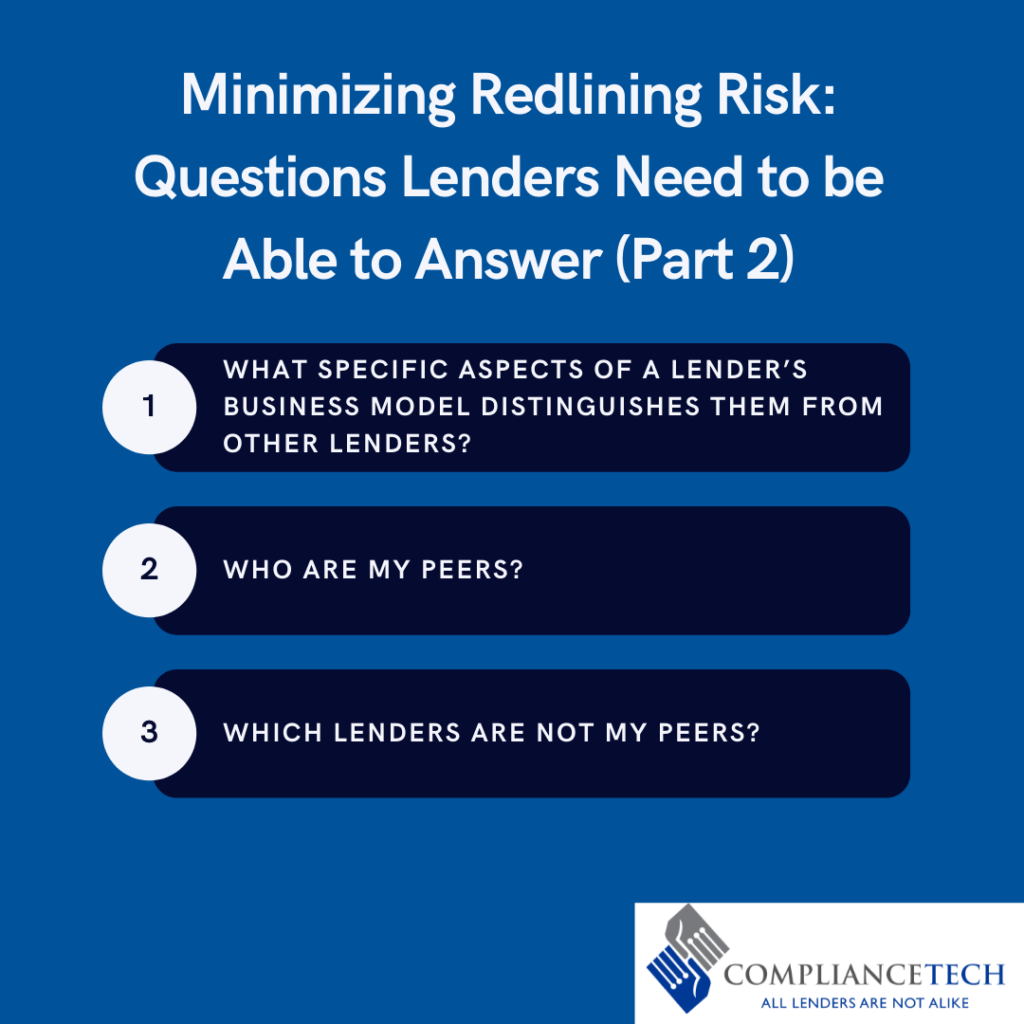
Recent lawsuits to enforce the federal fair housing laws should serve as strong signals to lenders of an aggressive stance the government is taking regarding the enforcement of redlining under the federal fair lending laws.
In Part 1, I highlighted the following five questions that every lender should be able to ask themselves and answer satisfactorily:
What is the lender’s footprint or market service area(s)?
Can the lender identify the majority-minority versus majority-white census tracts within its footprint?
Does the lender’s market share of applications or loans reveal a statistically significant difference favoring non-Hispanic whites?
Has the lender deployed its origination and mortgage delivery channel resources in an unbiased manner?
Does the totality of the lender’s policies and practices show the intent, or the effect of, excluding majority-black/Hispanic/minority areas?
In Part 2, I offer more questions that lenders should be prepared to answer to mitigate and overcome fair lending redlining risk.
Peer Analysis is central to redlining analysis
There is an expectation that the lender under scrutiny (the “subject lender”) should be performing consistently with its peers in a specified local geographical area. Implicit in Peer Analysis is mortgage credit demand analysis. In other words, significant peer activity reveals the demand for mortgage credit in majority-minority neighborhoods thereby creating an expectation that the subject lender will show a statistically similar proportion of activity. (There are some in the industry who would debate this premise.) Questions for lenders to ask regarding Peer Analysis are as follows:
- What specific aspects of a lender’s business model distinguishes them from other lenders? The distinctive characteristics should be those that are relevant to market demand for its loan products. The dominant business orientations or specializations likely to make a difference in consumer demand include the following: refinance specialist, purchase money mortgage-concentrated, builder-based financing, CRA-influence, FHA-dominant, Second lien lender, Jumbo-oriented originator and many more possible combinations.
- Who are my peers? It is widely known that the regulators have focused on lender size in the market. While size matters sometimes, it is by no means dispositive in terms of whether a particular neighborhood’s credit needs can be served by the type of products that the subject lender offers. For example, if a lender specializes in financing the purchase of manufactured homes, then that lender’s peers are other manufactured home-dominant lenders, regardless of whether the lenders are large or small.
- Which lenders are not my peers? Almost as important as knowing who is a peer is knowing which lenders are not. None of the following peer comparisons would be justified because of the vast differences in underwriting, pricing, and secondary market investor requirements: FHA vs. a conventional-dominant lender, VA-dominant lender vs. any other lender, Portfolio retail lender vs. independent mortgage company, or any credit union vs. a non-CU or CU with a different field of membership.

Recent Comments